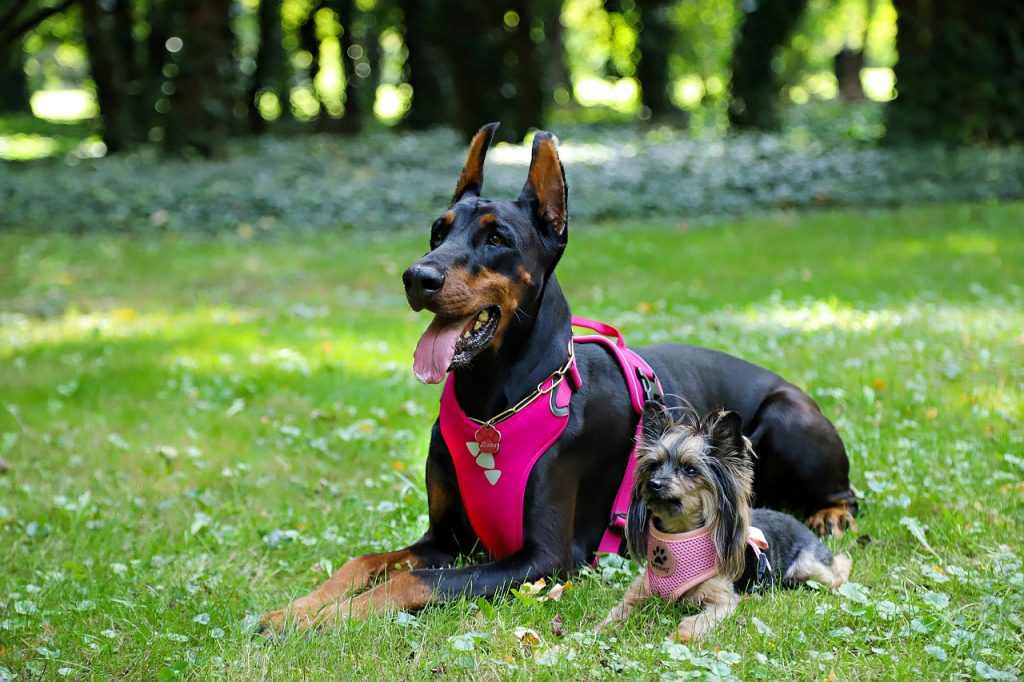- Step in harness – The dog puts 2 front legs through the harness which is then clipped at the shoulders (like a figure 8 design).
- Roman style harness – Goes over the head and then buckles around the belly. This might be a secure fit, but some dogs can get their legs out the front strap or you have to readjust the head strap each time its put on or off (depending on the shape and size of the head).
- H style harness – A fitted adjustable collar with an extension to a strap that encircles the belly. This style may be appropriate for puppies or small dogs, but not larger dogs.
- ‘No pull’ harnesses have a ring at the front of the chest and another on the back that provide 2 points of contact with the dog. The chest ring allows the handler to pull the dog to one side or the other so he is less able to pull straight ahead. However, this can tricky for some owners to handle and some dogs won’t respond. lea Other leash/collar combinations (e.g. 4ft leash with headcollar) are often more effective with less effort.

Dr. Stefanie Schwartz, DVM, MSc, Dip. ACVB is a board certified veterinary behaviorist and founder of www.CivilizedPet.com. If you need help with a misbehaving pet, please visit www.petbehavior.org.
© Stefanie Schwartz 2019